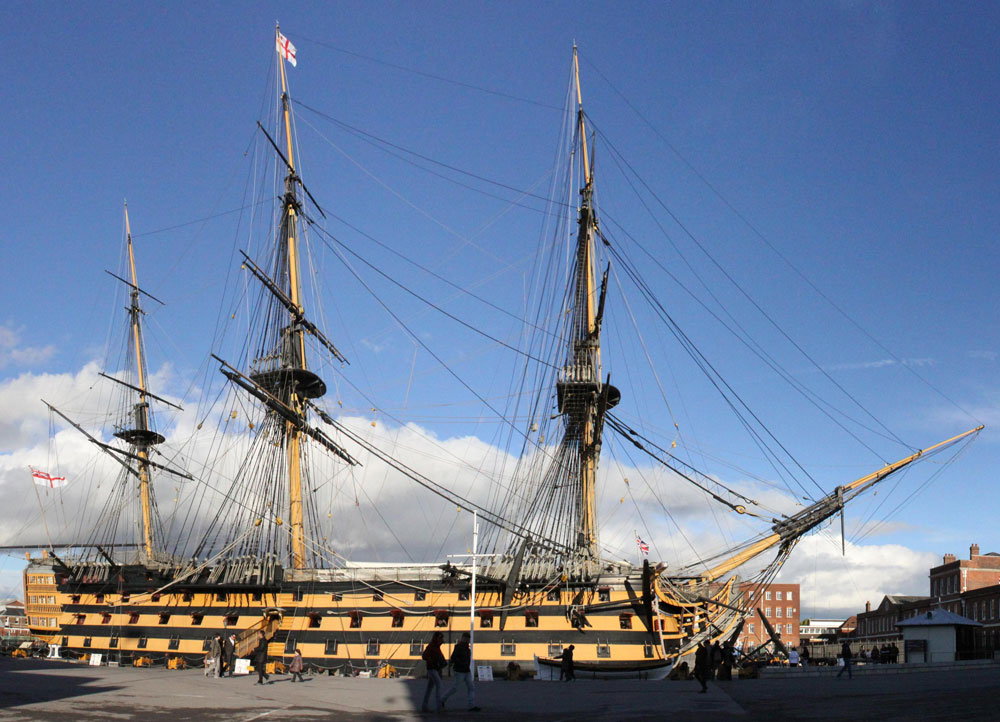Sir Thomas Slade: Nelson's naval architect
8th Jul 2025

At the Battle of Trafalgar, nearly a quarter of Nelson’s fleet, bearing nearly a third of the fleet’s guns, was designed by Sir Thomas Slade (1703/4-1771), who is buried in Ipswich, Suffolk, writes Peter Turner.
Thomas Slade was born into a well-established family of Ipswich and Harwich shipbuilders, while his uncle, Benjamin Slade, was master shipwright at Plymouth Dockyard. He probably began his apprenticeship at Deptford Yard, on the River Thames, in 1718. He became the naval overseer to the building of fourth-rate Harwich in Harwich, in 1742, and two years later surveyed Sandwich harbour and helped the planning of improvements to Sheerness, after which he was appointed assistant master shipwright at Woolwich.
When Benjamin was ordered by Admiral Anson, First Lord of the Admiralty, to examine the lines of some French prizes, he commissioned Thomas to make plans of them. As a result, Thomas became the protégé of Anson and was moved in turn from Plymouth, where he had replaced his deceased uncle, to Woolwich, Chatham and finally to Deptford in 1753, from where he continued to advise Anson.
In 1747, Thomas Slade married Hannah Moore of Ipswich (d. 1763) and they had one son, Thomas Moore Slade. When, in 1755, the incumbent surveyor of the navy, Sir Thomas Allin, was taken ill, the Admiralty appointed Thomas Slade joint surveyor with William Bately. By this time, Thomas Slade was already designing ships and his early designs included the first British-designed ‘74’s: a new type that became the staple of the British fleet until after the Napoleonic Wars ended in 1815. These were an evolution of previous British ships built to compete with the new French vessels of the same number of guns. There were at least forty-six 74s built to his designs.
Slade started designing smaller ships in 1756 and developed the true frigate, which still comprised two decks but with an unarmed lower deck, and with guns on the upper deck of a larger size than those on previous ships of this rating.
It was Slade who designed HMS Asia, the first true 64-gun ship. As a result, the Royal Navy ordered no further 60-gun ships but instead commissioned more 64s. Because these incorporated alterations learned from trials with Asia, subsequent ships Slade designed were bigger and would become the Ardent class of 64-gun ships of the line.
The first HMS Ardent was ordered in 1761, and six more would built over the following two decades. These included HMS Indefatigable, which was converted to a 44-gun razee frigate before being launched from Buckler’s Hard in 1784. A razee frigate is one that has had the upper gun deck removed, based on the French word rasé. This was because time had shown that while these were excellent ships, they were too small for use in the line of battle and so were converted to successful frigates.
Indefatigable had a series of illustrious commanders, including Captain Edward Pellew’s action with the much larger French 74-gun Droits de l’Homme and Commodore Graham Moore’s capture of the Spanish treasure fleet in 1804, among many other actions. Both captains would rise later to admiral. Indefatigable would overall be credited with a part in 92 captures of enemy vessels.
Two more of these ships were involved in the career of Nelson: HMS Raissonable and HMS Agamemnon. Raissonable was built at Chatham and was Nelson’s first ship, although she only operated in the Medway at that point. Agamemnon was also built at Buckler’s Hard and was Nelson’s favourite ship, and where he spent most of his time as a captain. Nelson was on board Agamemnon from January 1793 to June 1796 and lost his eye while in command.
In 1756, Slade began work on the design of the ship most associated with Nelson. It was to be the only first rate that he designed and which would become HMS Victory (100 guns). Victory was not launched until 1765 but, despite having exceptionally good sailing qualities, she did not see service during Slade’s life.
Slade was a prolific ship designer, for which he was knighted in 1768, but he died in Bath in 1771. His designs continued to be used until well after his death, with Victory being Slade’s greatest memorial, as she is still preserved to this day, at Portsmouth Historic Dockyard. However, his designs of many of 74-, 64-, 32- and 28-gun ships were also very successful.
Peter Turner is the editor of The 1805 Club’s magazine ‘The Kedge Anchor’. The 1805 Club is a society, open to all, which was formed to preserve and care for the memorials and graves of those associated with the sailing state navy of the Georgian era. In recent years it has established the Trafalgar Way, which runs from Falmouth in Cornwall to the Admiralty in central London and follows the route of Lieutenant Lapenotiere’s journey to deliver news of the victory. For more info, see the July 2025 issue of The Naval Architect.